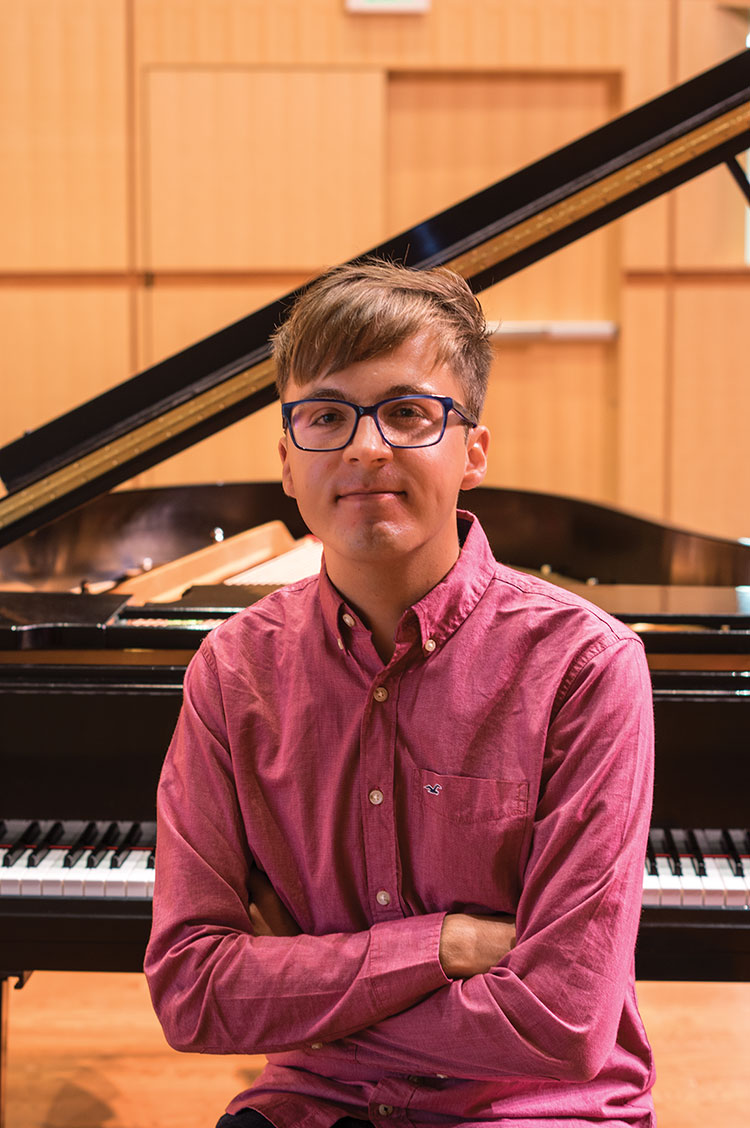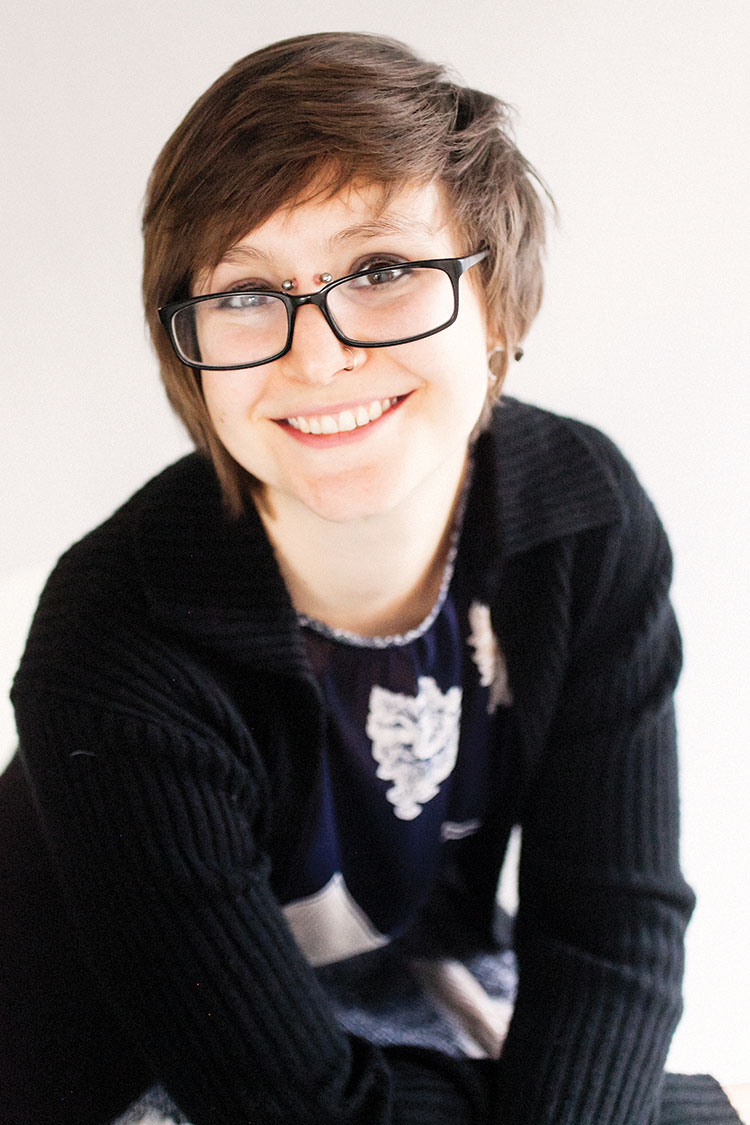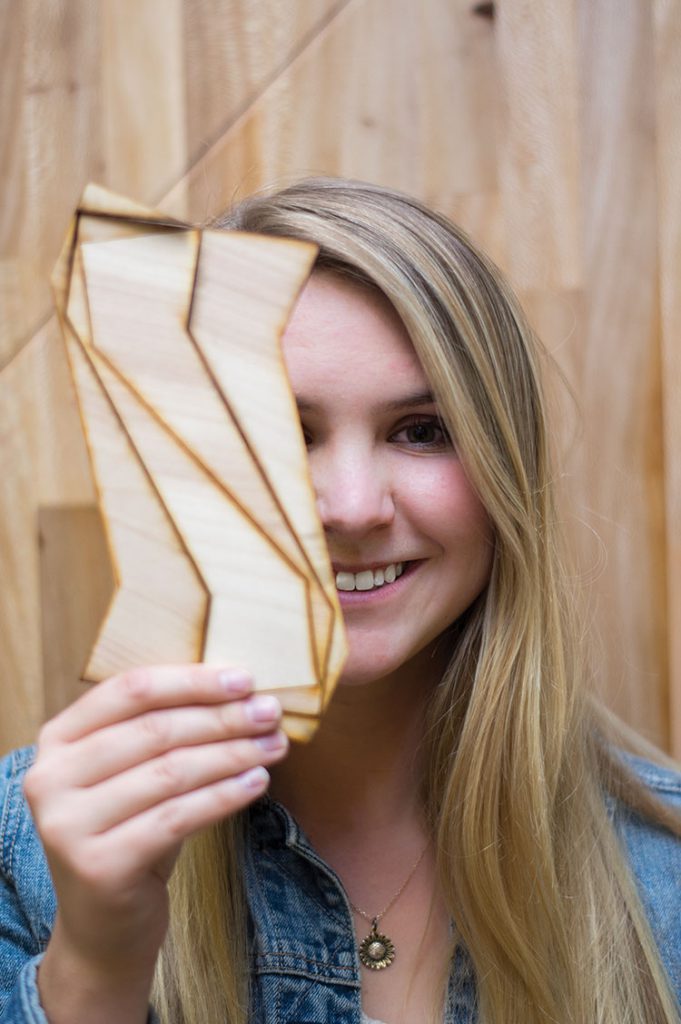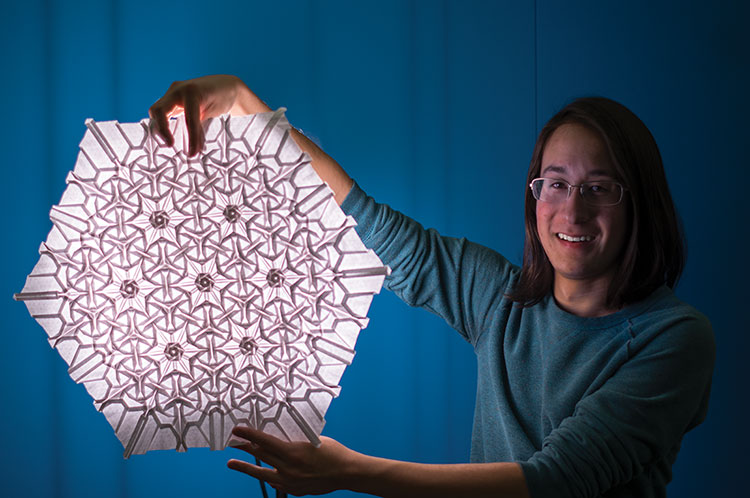
Math Conscience
A distinct approach to the field of mathematics
by Rachel Terran (’18) photography by Jack Benton (’18)
“Math with a conscience” is a term coined by Westminster’s math department to describe an approach to mathematics that provides opportunities for underrepresented populations to access math and allows students to begin thinking about math as a tool to address social inequities.
The math department strives to teach in ways that trigger problem-solving skills and logic, while also encouraging creativity and exploration of abstract concepts. The department roots liberal arts in the study of mathematics to create a diverse experience for students of all backgrounds.
What math students can discover through Westminster’s program is a new way of thinking—a logical, mathematical way of thinking—and they begin to appreciate it as a complementing force to face issues in the world. In fact, some students in the math department never thought they would be math majors; and suddenly, those who identified more as artists, scientists, or humanists start to see windows open for them in the field of mathematics.
“Math traditionally has a long chain of things you have to do before you get to the cool stuff,” says math professor Bill Bynum. “That closes off access to a lot of people because of their background and maybe because they have to start at the beginning of that chain—when really you can access neat mathematical thinking otherwise,” says Bill.
What Bill is referring to is the K–12 curriculum required of students. We can all probably think of that one math course that rocked our world—and perhaps influenced our entire perspective on the field of math—positively or negatively.
Westminster’s math department embraces different types of thinkers in the math environment in a positive way when they come to college. Those students who thought, “I’m not good at math,” suddenly have a venue to explore it in a way that opens up their problem-solving abilities.
The math faculty at Westminster teaches to the individual, which creates a space where students can bring their interests to the table and explore math in non-traditional ways.
“There is a sense of beauty in mathematics that we like to expose students to. When they see a mathematical situation and finally understand it, those endorphins fire in the brain,” Bill says. “Sometimes it’s the purest math that ends up being used by science: abstract models that science can use to fit the phenomenon it is interested in.”
One example Bill points to is prime numbers—the key to internet security. Bill uses tools like Jenga blocks to help students grasp concepts related to prime numbers and the Fibonacci sequence. “The existence of large numbers that computers can’t easily factor into primes is something that started abstract and became practical,” Bill says. Professor Kenan Ince points to another example in discussing their area of study— knot theory—which can answer interesting questions about things like our DNA.
Beyond knot theory, Kenan spends time in the classroom discussing ways in which math can relate to social justice, using texts such as Weapons of Math Destruction: How Big Data Increases Inequality and Threatens Democracy, a book by Cathy O’Neil. Kenan uses it to help describe how math fits into the larger picture of social inequity and injustice. Prior to becoming a mathematician, Kenan was interested in social justice and equity, so Westminster’s job ad, specifically talking about promoting equity and social justice, was a fit. “Math can be used as such a tool to measure and analyze inequity and injustice, and can be used to analyze distribution of resources and policy,” Kenan says.
Kenan explains that mathematical models used to make big decisions are created by human beings; and, according to psychological research, humans carry implicit bias, which often results in instances of implicit bias finding their way into algorithms. Such bias is not necessarily intentional on the part of the creator but, rather, a result of implicit bias.
“There are all these ways where math is used already as a force for injustice, so I want to turn that around, and I want to be able to use math in a way that promotes social justice and equity as much as possible,” Kenan says.
In fact, Kenan worked on a research project with a student last summer where they researched the use of force within Salt Lake City’s police department (SLPD). They analyzed an existing data set to record every instance in which force was used by an SLPD officer. Kenan notes that they did not have enough control variables for their research, meaning the results are not conclusive; however, they found statistical evidence of greater force used against folks that the police identified as black or Native American.
Math professor Sean Raleigh chairs the data science program. According to Sean, the program talks a lot about how data is being used in the real world and the systemic inequities that are created as a result of data. “There are serious issues with people who are not using the conscience side of math to create algorithms and with models that are really damaging society,” Sean says.
Westminster’s math department is committed to conversations about the ethics behind data, data storage, and privacy. “It’s not just math techniques we want students to think about: it’s what they are actually doing,” explains Sean.
Furthermore, the program focuses on active, experiential learning, where students can take abstract mathematical problems and discover real-life applications. The math program encourages students to develop something meaningful from math problems. In doing so, students combine critical thinking with creativity. While the words “creative” and “math” might not fit next to one another intuitively, many mathematicians speak to the creative components within the field. In fact, you might be surprised by how closely some mathematicians tie their work to art and the humanities.
Sean says, “I think people have the wrong idea about mathematics. Because of people’s junior high and high school experience, math is looked at as kind of this sterile, emotionless thing with mindless manipulation. I think we are trying to communicate that mathematics is as much of a humanities as anything else. The goal of mathematicians is to discover relationships and patterns—and there is a beauty in that that isn’t always communicated.”
“There is a lot of aesthetic beauty in mathematics; once you find a way to visualize it, it can turn into beautiful art,” Bill adds.
Meet three Griffins who speak to the bridge between mathematics, art, and the humanities. These individuals attest to the unique learning environment offered in Westminster’s math department:

Sean Groathouse (‘15)
Westminster alum Sean Groathouse (’15) is both a mathematician and a pianist. As Sean journeys through graduate school at the University of Utah, his focus is on probability and statistics.
Sean points to Bill Bynum’s classes for sparking his interest in these topics; he appreciates the ways in which Westminster encourages students to bring their own interests and questions forward—in and outside of class.
Previously a tutor in the math lab at Westminster, Sean also attests to the small, tightknit community that allows for direct attention to individual student needs.
As Sean reflects on his experience, “math with a conscience” was his favorite thing about the math department. He also notes that Westminster math majors learn much more about the history and philosophy of math.
According to Sean, math and music are profoundly linked. “Somehow, the types of thinking involved in analyzing music overlap with the types of creative, logical problem solving needed for math,” Sean says. “I think music reflects math in a lot of ways: in the relationships between notes, chords, and phrases, music could be characterized as the study of abstract relationships between objects, so it makes sense that studying the relationships between musical objects is mathematical. There’s an artistic sensibility that permeates the field, and of course the actual problem solving demands creative ideas.”

Diandra Ryan-Mas (‘15)
Diandra Ryan-Mas (’15) studied pure math—a field of math that explores abstract concepts—and she is now pursuing music. Postgraduation, Diandra worked as a computer programmer but, since, has set off on a journey to explore a career as a singer/songwriter.
Diandra said that during a summer research project, a running joke was that math is the only creative art that you trick the world into paying for, meaning that when you get a math degree you can expect to get a financially rewarding job afterward—a different reality than that of many artists.
From the perspective of someone who was doing math and is now creating art in the form of music, “it feels like I’m using the same skills and brain processes,” Diandra says.
Diandra describes her experience in Westminster’s math program as teaching her that “it is way more worthwhile to push yourself to the point where you meet your limits and where you are uncomfortable rather than live in a safe zone.”
“Writing math proofs can be paralyzing because you don’t know where to start, and even though you can use your intuition, it really doesn’t matter where you start as long as you start somewhere. The same thing goes with writing a song: you just have to start somewhere,” explains Diandra.
Diandra points to Westminster as a place where she was always able to talk about math, truth, and philosophy with her professors. She explains that high-level math can help answer moral questions and help you navigate the world as a human being.
“ people think that math is about solving for X, but when you get into higher-level math, it’s more about discovering a new system or proving a system,” Diandra says. “It’s looking at systems of rules and logic that nobody’s touched before—and that’s extremely creative.”

Jadie Adams (’18)
Jadie Adams is an artist who will graduate this year with a degree in mathematics and minors in computer science and physics. To complement her fairly quantitative course load, she is also an Honors student, where her classes are writing intensive and rooted in philosophy.
Jadie credits the math department as closeknit and supportive. “All the professors are very aware of what the students’ interests are, and they are constantly helping the students find opportunities that are a good fit for them,” Jadie says.
One example she points to is Westminster’s Geek Fest, where all the professors came and supported the student presentations. “They discussed how to split themselves up among the presentations so that everyone would feel supported,” she says.
During summer 2017, Jadie participated in a research program at the University of Washington Bothell. It was a research experience for undergraduates (REU) program, funded by the National Science Foundation (NSF). She spent two months working 40 hours a week on several open questions in tiling theory—a pure-math topic. As a result, she and two other students solved three open questions in tiling theory regarding the n-enclosing property and Heesch number of tiles.
As an artist, Jadie works across a diverse range of mediums. “As a mathematician, I’ve used Adobe Illustrator to create images of tilings for my research,” says Jadie. “It is a vector-based graphics app so it allows for the accuracy and exactness math requires. As an artist, my most frequently used mediums are watercolors and acrylic paints; however, I also enjoy simple pencil drawing, and I’m starting to explore wood burning as a new medium.”
Jadie speaks to the ways in which math and art overlap: “The arts are important to STEAM fields because the creative and philosophical mindset they help you develop is actually a key component to quantitative problem solving. The divide between math and art is a false dichotomy. I feel like a lot of people view me as having artistic abilities despite me being a mathematician, but really, I think my artistic background and ability to think outside the box are the characteristics that make me a strong mathematician: they are not separate aspects,” Jadie says.

It's All About Shapes
Evan Wang (’18), computer science and math major
Flat origami tesselations are beautiful forms of mathematical art. We talked to Westminster student Evan Wang about using geometry as the secret ingredient to discovering stunning tesselations.
What is the fundamental part of an origami tessellation?
“The fundamental part is a pleat, which is where you fold the paper in one direction and then fold it back in the opposite direction, thus making a pleat in the paper. In order to construct a tessellation, you fold a grid of either triangles or squares on a large piece of paper and then put pleats in it to create the shapes you want.”
Background:
“I didn’t actually get that far in math while in high school. Other than algebra, Westminster has taught me mostly everything I know about math. As a result, I have definitely learned to approach math in a more abstract way, rather than just crunching numbers and doing algebra. The program has definitely helped me further develop my critical-thinking skills.”
Math and art:
“Math is a process of discovery. I see creating mathematical art—based off mathematical ideas—as a process of discovery as well. For this reason, I don’t usually think about creating a tessellation: I discover it.”
Inspiration:
“For me, I’m always looking to discover beauty through my pieces. I kind of think about it in the way you would think about searching for beauty while taking a hike or walking down a snowy street. As you go along, you catch a sight of something beautiful. Perhaps it’s a vista you encounter on a hike or something of that sort. You could say I’m looking for a vista when I design origami tessellations. Given some idea I want to express through some certain set of shapes, I want to see what I can discover within those constraints and find something beautiful that way.”
Favorite shape:
Equilateral triangle
Website:
papersandwichblog.wordpress.com
About the Westminster Review
The Westminster Review is Westminster University’s bi-annual alumni magazine that is distributed to alumni and community members. Each issue aims to keep alumni updated on campus current events and highlights the accomplishments of current students, professors, and Westminster alum.
GET THE REVIEW IN PRINT STAY IN TOUCH SUBMIT YOUR STORY IDEA READ MORE WESTMINSTER STORIES
